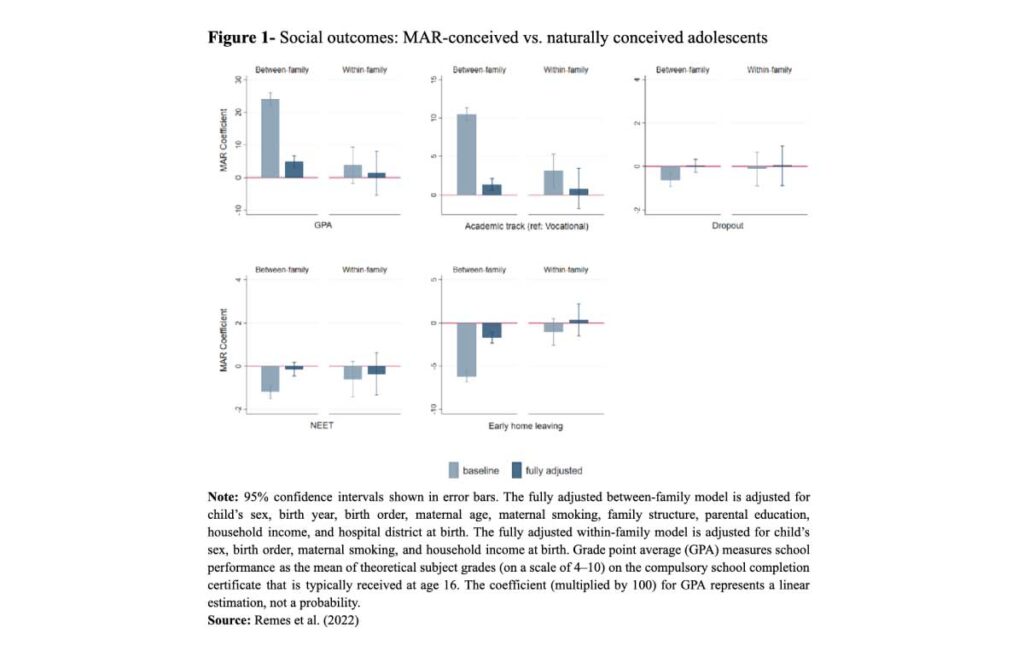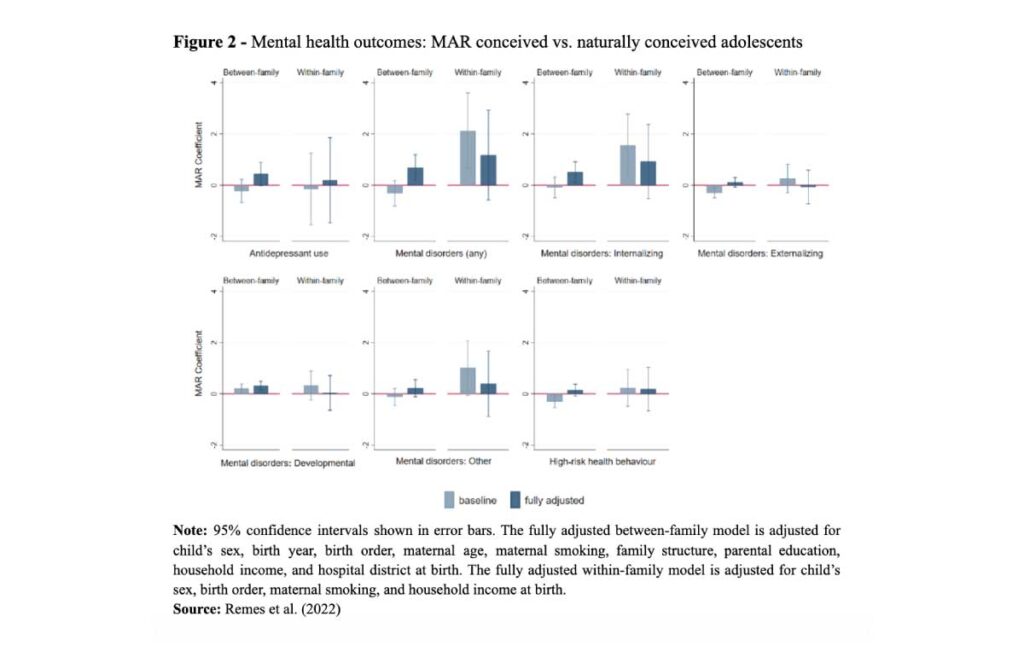The number and proportion of children born after medically assisted reproduction (MAR) is increasing fast and many gaps in knowledge remain about their longer-term well-being. Using population register data from Finland, Alice Goisis and colleagues compare a range of social and mental health outcomes amongst MAR and naturally conceived adolescents.
Introduction
Against the backdrop of the postponement of childbearing behaviours and the increased availability of Medically Assisted Reproduction (MAR) treatments over the last decades, the proportion of families formed via MAR has been rising rapidly and the positive trend is expected to continue (Faddy, Gosden, and Gosden 2018). MAR is playing an increasingly important role in the realization of fertility intentions in advanced societies and to date an estimated 10 million children have been born after MAR. Yet, our understanding of MAR-conceived children’s well-being beyond the childhood period is still limited.
In a recently published article in the European Journal of Population (Remes et al. 2022), using Population register data on all children born in Finland 1995-2000, we compared a range of social and mental health outcomes among MAR and naturally conceived adolescents between families in the overall population and, for a subset of families who conceived both via MAR and naturally, within families. The latter approach enabled us to adjust for family characteristics which are shared by siblings but unobserved in the data.
In the analysed data, 4.9% (n = 13,757) of adolescents had been conceived through MAR techniques. On average, in line with existing work (Goisis et. al 2020), MAR-conceived adolescents had more advantaged backgrounds: their parents had higher levels of education and income, were more likely to be married and less likely to smoke during pregnancy than parents of children conceived naturally.
Social outcomes results
In the analyses that did not adjust for family characteristics, MAR-conceived adolescents had higher school grades and their likelihood of school dropout, not being in education or employment (NEET), and early home-leaving were lower than among naturally conceived adolescents. However, this advantage over naturally conceived children was largely explained when we adjusted for sociodemographic characteristics (Figure 1). This pattern was further supported by the analyses where we compared MAR-conceived adolescents to their naturally conceived siblings, which showed no differences in the social outcomes. These results suggest that MAR-conceived children had better social outcomes because they benefitted from their parents advantaged characteristics.

Mental health outcomes results
In the analyses that did not adjust for family characteristics, the results largely showed no differences between MAR and naturally conceived adolescents. However, when adjusted for child and parental characteristics, MAR-conceived adolescents were found to be more likely to have received care for any mental disorder and for internalizing disorders, in particular (Figure 2). This pattern of associations was also observed in the within-family analyses. Therefore, MAR-conceived adolescents advantaged social background compensates for the otherwise increased risk of poorer mental health outcomes. This increased risk might be related to parental anxiety and depression associated with the experience of subfertility, which could expose the children to a higher risk of mental health problems. Another possible pathway could be higher expectations and overprotectiveness amongst MAR parents that adversely affect their children’s socio-emotional outcomes. More research is needed to understand the possible mechanisms underlying the observed association.

Conclusions
The results paint a generally reassuring picture for adolescents born after MAR who, on average and before taking into account family characteristics, show better social outcomes and similar mental health outcomes to children conceived naturally. Moreover, they show the importance of integrating family characteristics whilst investigating MAR children’s outcomes. Indeed, the positively selected and advantaged characteristics of MAR parents help explain why MAR-conceived children outperform naturally conceived children on social outcomes, and are likely to compensate for their otherwise increased risk of mental health disorders. Finally, the comprehensive perspective on MAR children offered by this study highlights a potential trade-off and variation in the link between MAR and adolescent outcomes across different dimensions of well-being. Although relatively small, the observed mental health differences raise concerns and deserve further investigation.
References
Faddy Malcolm J., Gosden Matthew D., Gosden Roger G. 2018. “A Demographic Projection of the Contribution of Assisted Reproductive Technologies to World Population Growth.” Reproductive Biomedicine Online 36(4):455–58.
Goisis, A., Håberg, S., Hanevik, H., Magnus, M.C., Kravdal Ø. (2020). The demographics of assisted reproductive technology births in a Nordic country Human Reproduction 35(6): 1441–1450.
Remes, H., Palma, M., Peltonen, R., Martikainen, P. and Goisis, A. (2022) The well-being of adolescents conceived through medically assisted reproduction: a population-level and within-family analysis. European Journal of Population 38: 915–949.


